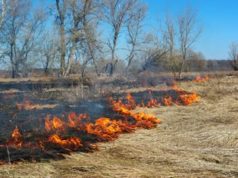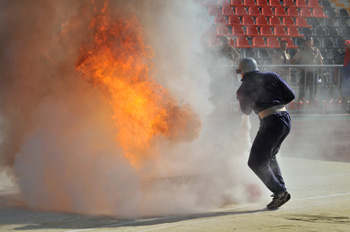
One of the
main challenges to arson prosecutions is to distinguish between arson
fires and accidental fires. Arson fires are fires set with intent to destroy or damage property.
The legal definition of arson fires involves fires where the person setting the
fire had the intent to commit harm by setting the fire, as well as setting the
fire or being interrupted while in the process of setting the fire. Accidental
fires are all other kinds of fires.
Accidental fires are usually
not prosecuted as arson. If however, an accidental fire occurs because of
demonstrably gross negligence or a casual disregard for the
consequences of setting the fire, these fires can cease to be judged as
accidental and may instead be seen as arson fires.
An accidental fire is often set by a juvenile. In such situations, these juveniles may simply be
manifesting an innate human interest in fire. More than half of the people
arrested for setting fires of both types were under the age of 18 in 2003.
Children under the age of seven are generally not setting arson fires.
Accidental fires set by these children are almost exclusively the result of
curiosity.
In children ages eight to
twelve, fires are still sometimes accidental, but a greater proportion are
arson fires. The arson fires set by these individuals are often a manifestation
of deeper psychological problems, as seen by the fact that there are relatively
few accidental fires set by juveniles thirteen to eighteen years old. Fires in
this group are often intentional and criminal, meaning they can be properly
called arson fires as can those set by adults.
Accidental fires set by adults come in several forms. The most
widely depicted presentation of accidental fires in the media is the drunkard
who falls asleep while smoking a cigarette, which then sets fire to the bed.
Cigarettes represent the greatest source of accidental fires in the home. As a
result of widespread calls for reform, technology has been adopted to try and
prevent the rate at which accidental fires are created by cigarettes by
changing the composition of the cigarettes so that they are less likely to burn
if left unattended.
Another common species of
accidental fires involving cigarettes involved throwing a lit cigarette from a
moving car. This is a gray area, though, because negligence or disregard may
apply.
A type of accidental fires that
is not in dispute, however, involves campfires. Campfires at which every
reasonable effort is made to control the fire and contain its blaze, but still
spreads due to the spread of properly managed embers, can only be included in
the category of accidental fires no matter how large the blaze which results.
Accidental fires in the home can have several causes. The forensic
scientists employed to investigate fires are trained to examine whether a fire shares more similarities in burn
patterns with accidental fires or arson fires. Common sources of accidental
fires include cooking accidents, electrical appliances that have overheated,
been left on for too long, or short-circuited, sparks from fireplaces or
welding tools, cigarettes, or lightning strikes.





























